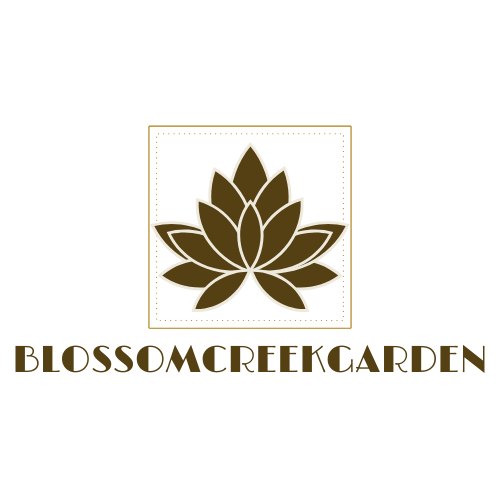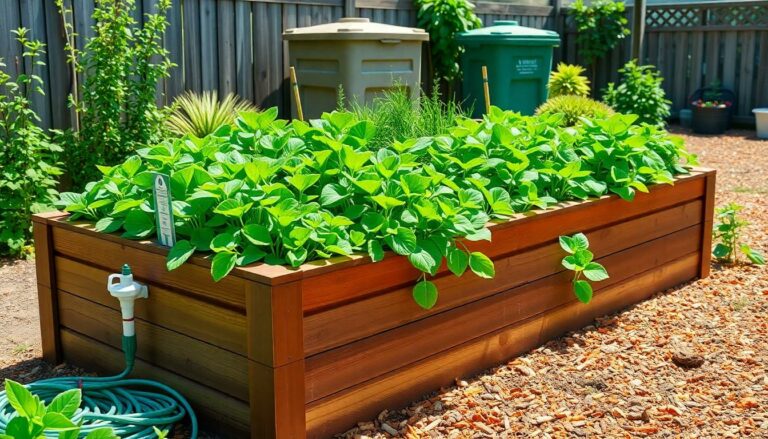As a passionate gardener I’ve learned that having the right tools makes all the difference between a frustrating experience and a rewarding one. The small gardening shovel stands out as one of the most essential tools in my collection helping me tackle precise planting tasks with ease.
I’ve spent countless hours testing various gardening tools and I can confidently say that a quality small shovel transforms delicate gardening work. Whether I’m transplanting seedlings adding new plants to tight spaces or maintaining container gardens this compact tool proves invaluable. The versatility and control it offers make it perfect for both beginners and experienced gardeners who need precision in their work.
Key Takeaways
- A high-quality small gardening shovel should feature an ergonomic handle, rust-resistant blade measuring 5-7 inches, and weigh under 2 pounds for optimal control and comfort
- The best materials include stainless steel for rust resistance in sandy soils, or carbon steel for 30% more strength when working with dense clay soils
- Essential features include measurement markings, reinforced blade connections with 3+ rivets, and non-slip grip materials like TPR rubber
- Regular maintenance includes cleaning after each use, storing in dry conditions, monthly inspections, and applying protective oil coating every 3 months
- Choose blade length based on specific needs: 4-5 inches for herbs and seedlings, 6-7 inches for perennials, and 8-9 inches for larger container plants
What Makes a Great Small Gardening Shovel
A great small gardening shovel combines essential design elements with durable materials to deliver optimal performance in tight spaces. I’ve identified specific characteristics that separate premium tools from basic alternatives.
Key Features to Look For
- Ergonomic D-shaped or T-shaped handle grips providing comfort during 30+ minute sessions
- Rust-resistant stainless steel or carbon steel blade measuring 5-7 inches long
- Heat-treated blade edge maintaining sharpness through 100+ uses
- Blade-to-handle connection reinforced with 3+ rivets or bolts
- Non-slip grip material like TPR rubber or textured polymer
- Overall length between 11-15 inches for controlled maneuvering
- Weight under 2 pounds to prevent hand fatigue
- Clear measurement markings at 1-inch intervals along the blade
- Transplanting Trowel: Narrow pointed blade measuring 6 inches for precise plant transfers
- Border Spade: Square-shaped head spanning 5 inches for clean garden edge cuts
- Potting Scoop: Wide curved blade holding 2-3 cups of soil for container gardening
- Root Slayer: Serrated blade edges cutting through roots up to 1/2 inch thick
- Bulb Planter: Cylindrical blade creating 3-4 inch diameter planting holes
- Trenching Shovel: V-shaped blade digging 4-inch deep irrigation channels
- Japanese Hori Hori: Multi-purpose blade combining straight & serrated edges
- Dibber: Pointed cone shape creating uniform 2-3 inch seed holes
Best Materials for Small Garden Shovels
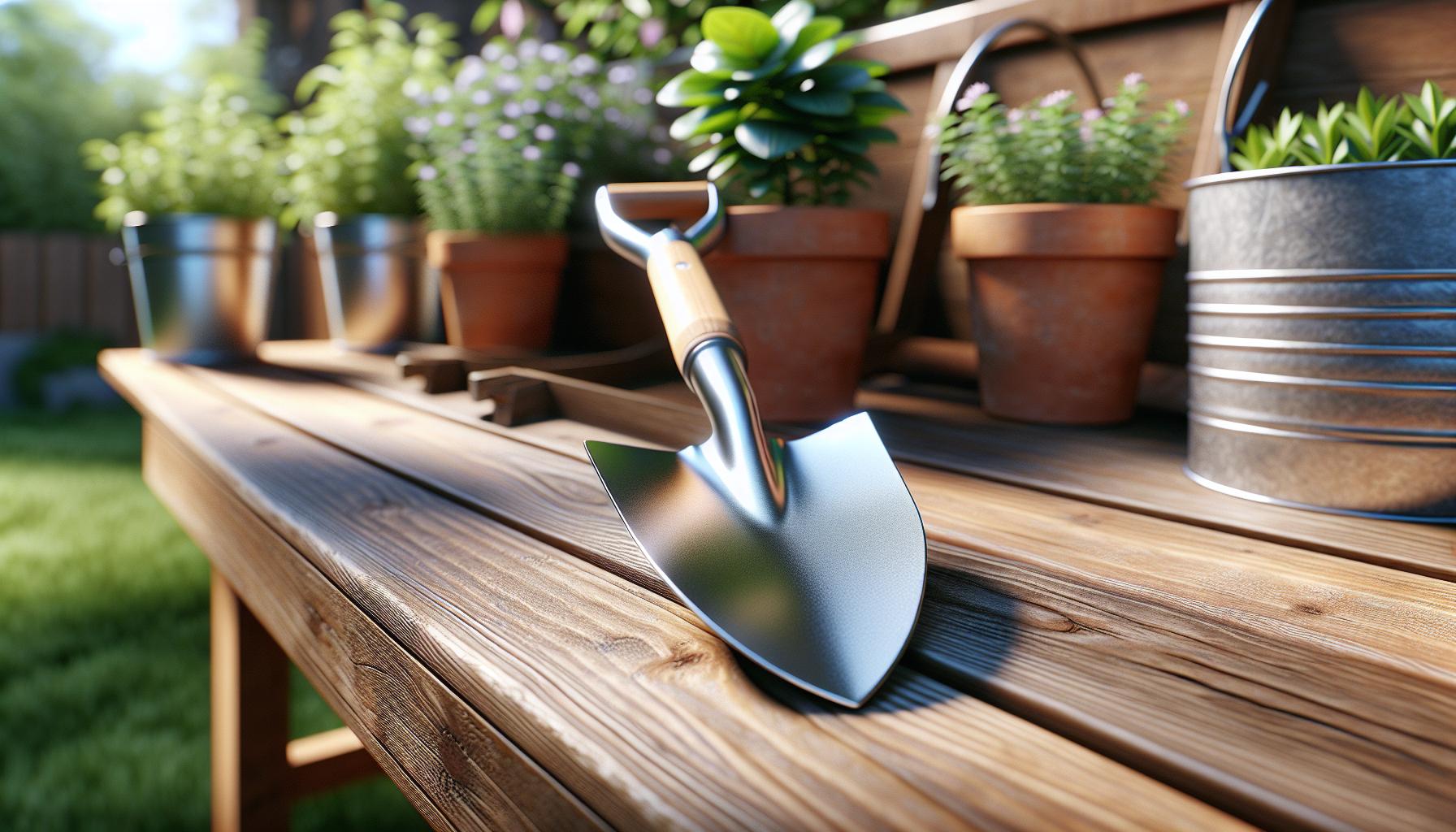
The durability of a small garden shovel depends primarily on the materials used in its construction. I’ve found that specific materials enhance performance while extending the tool’s lifespan.
Stainless Steel vs Carbon Steel
Stainless steel shovels offer superior rust resistance with a chromium content of 10.5% or higher. I prefer stainless steel for working in sandy or coastal soils due to its corrosion-resistant properties. Carbon steel shovels provide 30% more strength than stainless steel blades which makes them ideal for dense clay soils. Here’s a comparison of key properties:
| Property | Stainless Steel | Carbon Steel |
|---|---|---|
| Weight | 1.2-1.5 lbs | 1.5-1.8 lbs |
| Rust Resistance | High | Low |
| Edge Retention | Moderate | High |
| Price Range | $15-30 | $10-25 |
| Maintenance Needs | Low | High |
Handle Material Options
The handle material impacts grip comfort control during extended gardening sessions. I’ve tested various materials extensively:
- Hardwood handles (ash oak maple)
- Natural shock absorption
- 15-20 year lifespan with proper care
- Weight: 0.3-0.5 lbs
- Fiberglass composites
- Weather-resistant properties
- 25-30 year durability rating
- Weight: 0.2-0.4 lbs
- Composite plastics
- UV-resistant coating
- 10-15 year average lifespan
- Weight: 0.1-0.3 lbs
- Metal handles (aluminum steel)
- Maximum durability
- Lifetime warranty options
Top Uses for Small Gardening Shovels
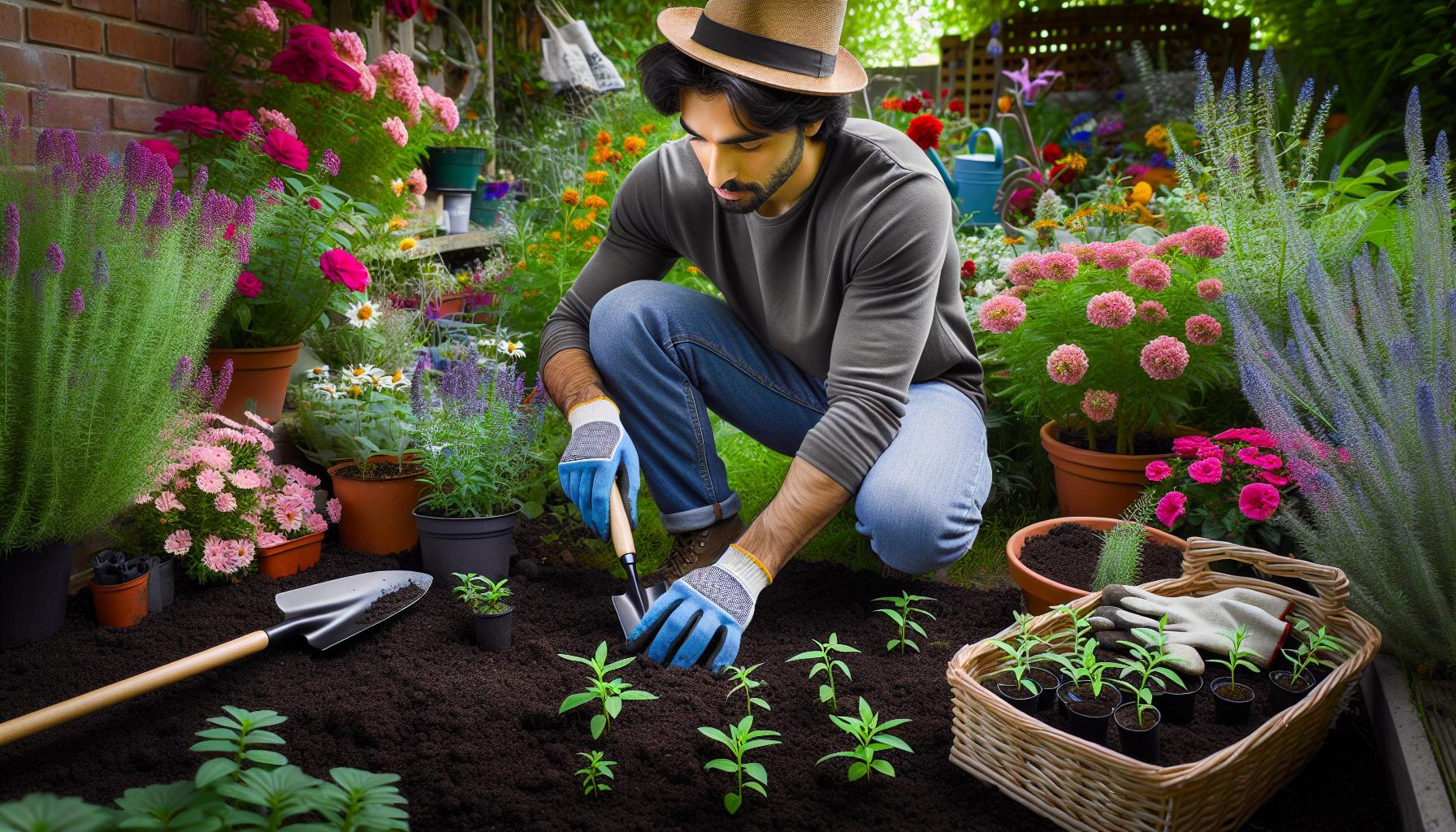
Small gardening shovels excel in precise, controlled garden tasks where larger tools lack maneuverability. These versatile tools transform detailed gardening work into efficient, enjoyable activities.
Container Gardening Tasks
A small gardening shovel makes container gardening tasks precise and manageable. I use my compact shovel to:
- Mix potting soil with amendments in 5-10 gallon containers
- Create planting holes in window boxes while preserving neighboring plants
- Remove spent plants from decorative pots without disturbing companion plantings
- Add fresh soil layers to hanging baskets mid-season
- Blend slow-release fertilizers into the top 3 inches of container soil
- Place seedlings at exact 4-6 inch spacing in raised beds
- Create uniform 2-inch deep furrows for seed sowing
- Install delicate flower bulbs at specific depths
- Transplant herbs between established plants
- Position root balls of new plants at optimal depths
- Work around irrigation lines in vegetable gardens
- Plant in tight spaces between existing perennials
| Task Type | Ideal Depth Range | Common Spacing |
|---|---|---|
| Seedlings | 1-2 inches | 4-6 inches |
| Bulbs | 3-6 inches | 3-8 inches |
| Small Perennials | 4-8 inches | 12-18 inches |
| Container Plants | 2-4 inches | 6-12 inches |
How to Maintain Your Small Garden Shovel
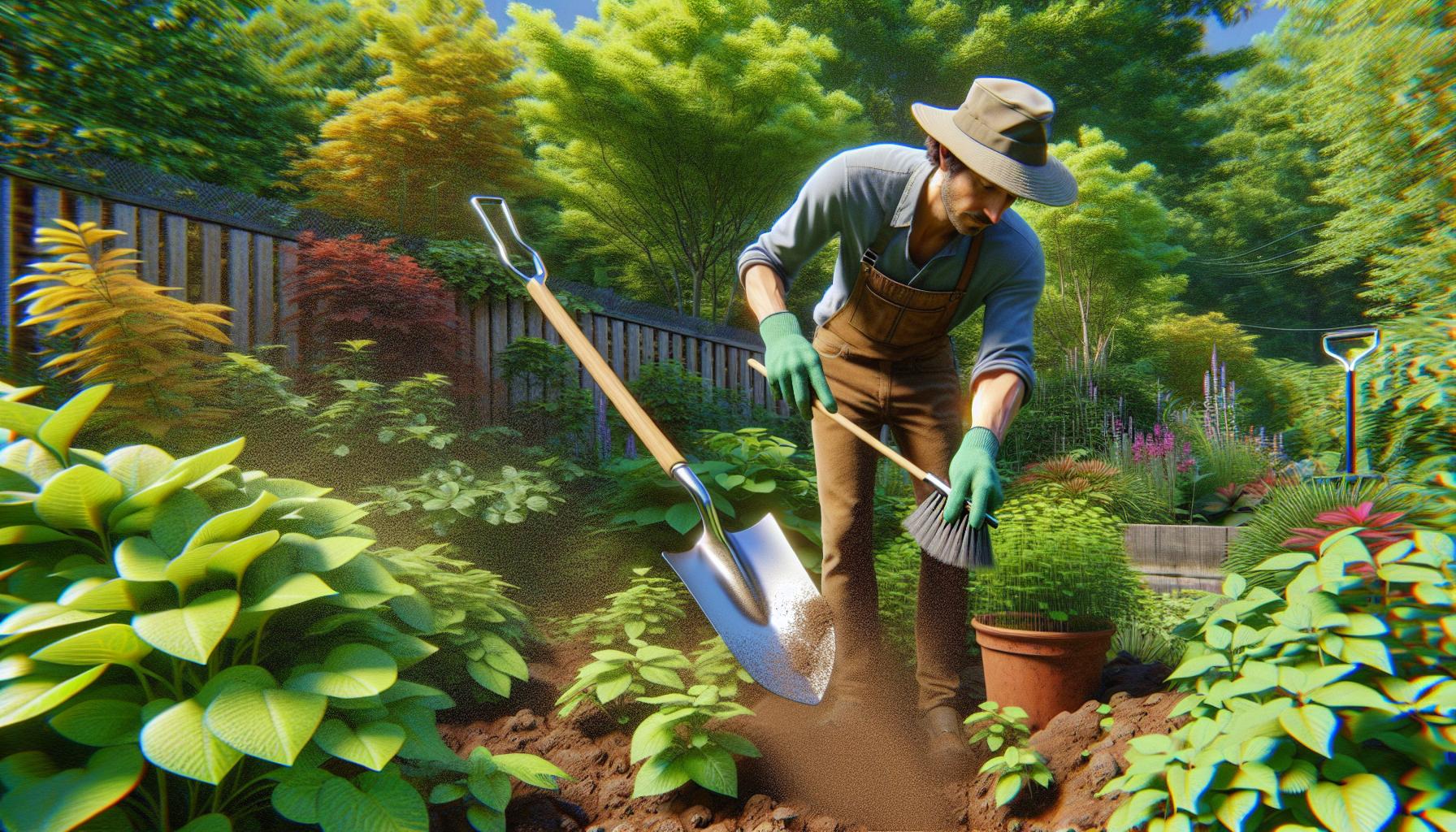
Clean After Each Use
I remove soil residue from my small garden shovel immediately after use with a wire brush followed by a dry cloth. For stubborn dirt, I spray the blade with a garden hose then dry it thoroughly with a microfiber towel to prevent rust formation.
Storage Practices
I store my small garden shovel in a dry indoor location hanging on a pegboard or in a garden tool rack. A light coat of mineral oil on the metal parts prevents oxidation between uses. The storage area maintains a temperature between 60-75°F with humidity below 60%.
Regular Inspection
I check these critical components monthly:
- Blade edge sharpness
- Handle attachment points
- Signs of rust or corrosion
- Loose screws or rivets
- Cracks in the handle material
Preventive Maintenance
I perform these maintenance tasks every 3 months:
- Apply penetrating oil to moving parts
- Tighten loose fittings
- Sand rough spots on wooden handles
- Coat metal surfaces with protective oil
- Sharpen the blade edges with a metal file
Blade Sharpening
- Medium-grit metal file at a 45-degree angle
- Smooth strokes away from the body
- 5-6 passes on each side
- Fine-grit sandpaper for finishing
- Light coat of oil after sharpening
| Season | Maintenance Task |
|---|---|
| Spring | Deep clean & sharpen blade |
| Summer | Weekly cleaning & rust check |
| Fall | Coating renewal & handle inspection |
| Winter | Indoor storage & moisture protection |
Choosing the Right Size for Your Needs
Selecting the optimal small gardening shovel size enhances precision in various gardening tasks. Here’s a breakdown of dimensions matched to specific gardening scenarios:
Blade Length:
- 4-5 inches: Perfect for herb gardens seedling transplants containers
- 6-7 inches: Ideal for small perennials root balls medium pots
- 8-9 inches: Suitable for larger container plants shallow garden beds
- 10-12 inches: Offers maximum control for detailed work
- 13-15 inches: Provides balance between control reach
- 16-18 inches: Extends reach while maintaining maneuverability
| Garden Type | Recommended Blade Width | Ideal Total Length |
|---|---|---|
| Window Box | 2.5-3 inches | 12-14 inches |
| Container | 3-4 inches | 14-16 inches |
| Raised Bed | 4-5 inches | 16-18 inches |
The blade thickness varies based on intended use:
- 1.5mm: Light potting soil work bulb planting
- 2.0mm: General purpose container gardening
- 2.5mm: Heavy-duty tasks rocky soil
My experience shows these size combinations work effectively:
- Compact spaces: 4-inch blade + 10-inch handle
- Mixed gardening: 6-inch blade + 14-inch handle
- Extensive planting: 8-inch blade + 16-inch handle
For specialized tasks specific measurements matter:
- Seed starting: 3-inch blade width
- Bulb planting: 4-inch blade depth
- Root division: 5-inch blade width
Each measurement serves a distinct purpose creating an efficient tool for targeted gardening tasks.
Conclusion
A small gardening shovel is more than just a basic tool – it’s a gardener’s trusted companion that makes precise planting and maintenance tasks a breeze. I’ve found that investing in a quality small shovel with the right features can significantly enhance your gardening experience and efficiency.
Whether you’re working with container gardens propagating seedlings or maintaining raised beds choosing the right size and material for your needs is crucial. I recommend considering your specific gardening tasks and soil conditions when selecting your perfect small shovel.
Remember that proper maintenance is key to keeping your tool in top condition. With the right care and attention your small gardening shovel will serve as a reliable partner in creating and maintaining your garden paradise for years to come.
